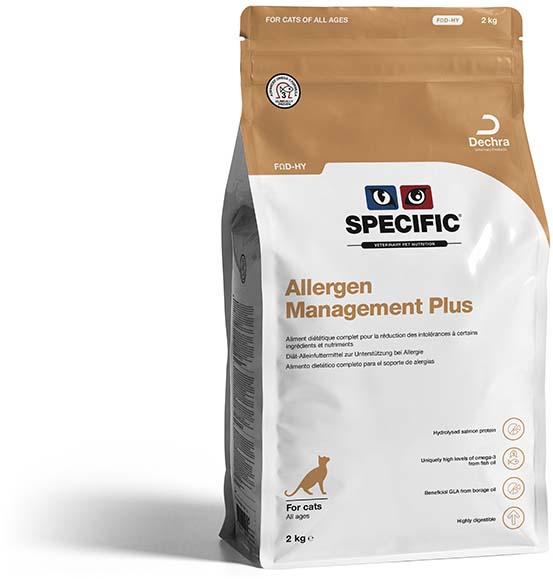SPECIFIC Derma and Allergy diets (including atopy and food allergies)
SPECIFIC offers a range of diets for the management of the whole allergy spectrum - atopy, food allergies, and combined allergies. SPECIFIC delivers health benefits for both cats and dogs through Allergen Management, Allergen Management Plus and Skin Function Support in wet and dry form.
- Reduced allergenicity with both hydrolysed and novel proteins diets and limited ingredients
- Superior skin support with uniquely high levels of the omega-3 fatty acids EPA and DHA from fish oil and krill; omega-6 fatty acid GLA from borage oil and vitamin A, E and B complex, protein, zinc and selenium to support a healthy skin and coat.
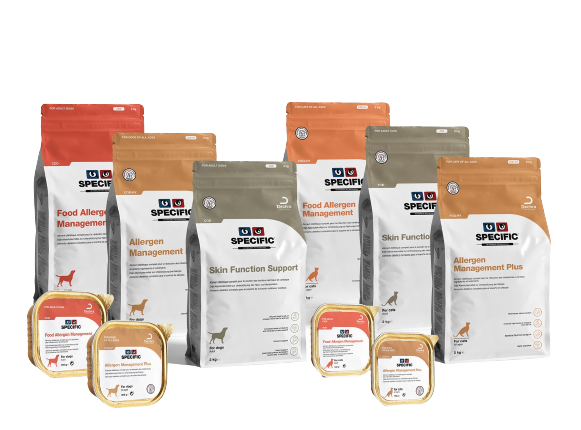
Additional insight on omega-3 and omage-6 pathways add
Nutrition and allergic dermatitis (multi modal management)
Managing atopy often requires a holistic approach. Pruritus is the major symptom in pets with allergic skin disease. The degree of pruritus is a result of different factors, such as presence of parasites, infections, exposure to environmental or food allergens, dry skin and stress, which all contribute to itching.
Pets can tolerate a certain level of itch without getting itchy. However, when the sum of all stimuli exceeds a certain threshold, the pet it will start scratching, possibly leading to further skin lesions or infections.
In pets with allergic skin problems, it is therefore important to reduce the level of itch below the critical threshold. In practice, this generally means that not only a single itch stimulus should be reduced, but that allergic pets can best be controlled by reducing several itch stimuli.
Nutritional Management add
Nutritional management is often not sufficient as sole therapy for atopic dermatitis, special diets that support basic skin health, avoid provocative food allergens, provide functional nutrients that support skin barrier function and reduce inflammatory reactions, are widely acknowledged as valuable means to management allergic dermatitis.
In fact, independent of the cause, for all dermatoses with compromised skin and coat a special diet rich in skin-supportive nutrient can support restoration of skin lesions and regrowth of hair.
Cutaneous bacterial and Malassezia infections add
Pets with allergic skin disease are more susceptible to infections with yeast or bacteria. Cutaneous bacterial and Malassezia infections contribute to inflammation and the release of pruritic mediators. Furthermore, they can act as allergens against which pets produce IgE. Immediate treatment of infections contributes to the reduction of pruritus.
A review showed that 78% of canine otitis externa cases had underlying atopy or food allergy. Nutritional management of the underlying cause can reduce recurrent otitides and need for recurrent treatment with antibiotics.
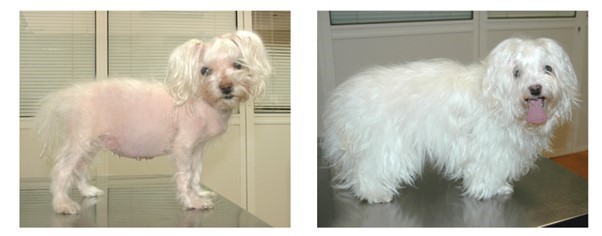
In individual cases additional medication with glucocorticoids, anti-histamines, oclacitibib or cyclosporine may be needed to keep the level of pruritus below the individual itch threshold by treatment. High intakes of fatty acids can reduce the required dose of medication.
Also additional care can further contribute to optimal management of allergic cats and dogs:
- To reduce pruritus caused by an allergic reaction towards environmental allergens, it is important to reduce the allergen load as much as possible. Exposure to storage mites can be reduced by storing the pet’s diet in a clean, closed container
- Strict flea control on the pet and its environment is essential
- Regular combing and frequent bathing can reduce pruritus in atopic pets by eliminating secondary changes as excessive scaling or greasy skin, and removal of offending allergens from the skin5.
- Use of anti-pruritic, anti-microbial, or moisturizing shampoos, topic antimicrobial lotions, topical glucocorticoids or anesthetics sprays, creams or ointments can be useful in the reduction of the degree of pruritus.
Impact of nutrition on skin and coat
The skin is the largest organ of the body and with its high cell turnover and metabolic rate it has a high physiological requirement for skin-supporting nutrients to maintain its structure, skin barrier function and health46. Several nutrients are important for maintenance of healthy skin and coat:

add
but especially the essential omega-6 fatty acid linoleic acid (C18:2n-6) is important for the production of sebum and maintenance of the cutaneous water permeability barrier; a dietary deficiency in linoleic acid results in a dull, dry coat with fine scales

add
(especially methionine, cysteine, and proline) are important for hair growth and keratinization and pigmentation of skin. Protein malnutrition causes brittle and depigmented hair, shedding, reduced hair growth and thin and inelastic skin. Phenyl alanine and tyrosine are precursors of melanin and required for maintenance of black coat. A relative deficiency in these amino acids will change the colour of a black coat into red-brownish.
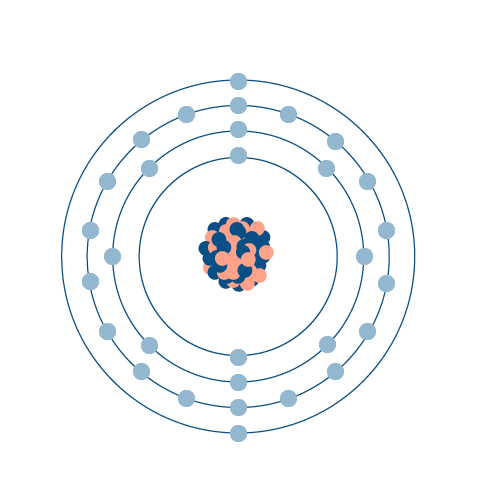
add
is an essential part of several enzymes which are important for rapidly diving cells as epidermal cells, biosynthesis of fatty acids and metabolization of vitamin A. Cutaneous symptoms of zinc deficiency are dull, harsh coat, erythema, alopecia, and crusts and scales especially around the eyes, muzzle, mouth, pinnae, paws and pressure point on the limbs.
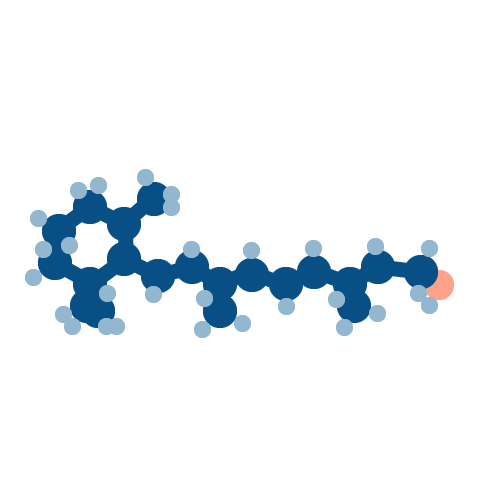
add
is particularly important for keratinization and vitamin A-deficiency results in hyperkeratinization, scaling, alopecia, reduced hair growth and reduced immune response towards skin infections.
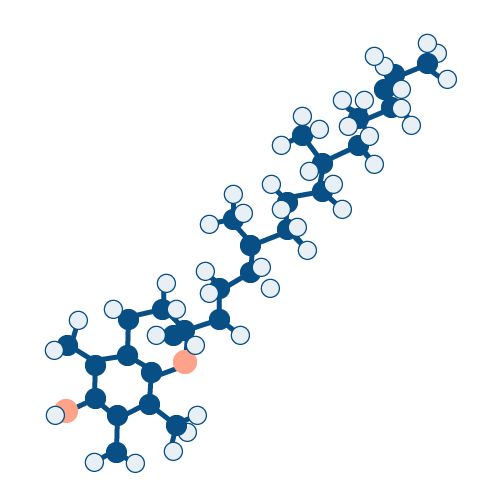
add
is a natural antioxidant which plays, together with selenium, an important role of the stability of cell membranes. The dietary requirement of vitamin E increases with the increasing dietary level of polyunsaturated fatty acids. In cats, vitamin E deficiency results in pansteatitis (inflammation and necrosis of subcutaneous and abdominal fat as result of lipid peroxidation).
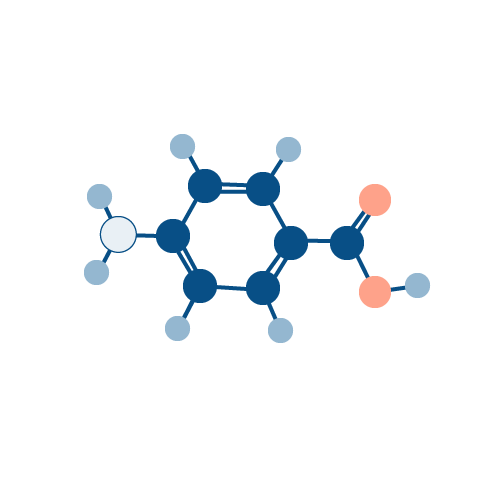
add
are required as cofactor in many metabolic processes and a deficiency in B-vitamins is often associated with dermatological signs as alopecia, dry, flaky seborrhoea and a poor skin and coat condition.
The Dechra academy provides a range of on-line learning including this course related to allergy and atopy
The Role of Nutrition in Managing Allergies and Atopic Dermatitis
This course covers the role of nutrition, as part of a multi-modal approach to atopic dermatitis, the value of protein hydrolysis and PUFAs, and the management of elimination trials.
Register for the Dechra Academy
Already registered for the Dechra Academy? - go directly to the course:
Access the module on managing allergies

Nutritional needs for food allergies
The prognosis for pets with food allergy is very good. Food allergy itself cannot be cured, but clinical symptoms can be prevented by avoidance of the ingredients to which the patient shows an adverse reaction. There are two types of diets with low allergenicity: diets that use uncommon, or ‘novel’, ingredients and diets that use hydrolysed proteins.
Novel proteins in diets add
The efficacy of hypoallergenic diets based on uncommon or novel ingredients relies on the fact that immunologically based reactions to food components (primarily IgE related Type I reactions) will only take place if the pet has been exposed to the allergen before, so that its immune system is triggered to react to the food allergen at a later exposure. The composition of the ideal hypoallergenic diet depends primarily on the ingredients that the individual cat or dog has been exposed to during its life. Finding a diet with ingredients the patient has never eaten can be difficult, especially with the growing number of pet foods that include exotic protein sources. An exhaustive diet history should be obtained and evaluated including all the products the patient has been consuming during his live and the ingredients included in composed products.
Commercial or homemade nutrition based on novel ingredients can be used for management of adverse food reactions. Some authors prefer home-made diets, especially for use as eliminations diet, since these do not contains food additives (suggested as possible cause of adverse reactions) or components produced during processing at high temperatures. On the other hand, homemade diets can be expensive and time-consuming to prepare, or may induce constipation or diarrhoea. A major disadvantage is that most homemade diets for initial management of dogs and cats with suspected adverse food reactions are not nutritionally complete diets and can therefore not be used for growing animals or for long-term use.
There are several commercial veterinary therapeutic hypoallergenic diets available in the market, which are nutritionally complete and balanced and more convenient to use. Although not one commercial diet will be effective in all patients, many of them have been tested to demonstrate its efficacy. Over the counter foods with uncommon ingredients should be avoided, since some of them may contain multiple protein sources and include traces of common pet food proteins not mentioned on the label.
Hydrolysed proteins in diets add
Immunological reactions to food components are usually against glycoproteins, commonly ranging in size from 10 to 40 kilodalton. Enzymatic hydrolysation of protein into small peptide fragments will reduce its allergenicity, because offending epitopes will be broken down, so that they will not bind to IgE receptors on the mast cell surface. Furthermore, mast cell activation requires cross-linking of two or more IgE molecules bound to IgE receptors on the mast cell. This means that the allergen must be large enough to bind to two IgE receptors. This size has been defined in human medicine as above 10 kD, but there are no data for dogs or cats.
There are several commercial therapeutic diets based on hydrolysed protein available. These diets provide a good option when the patient has been exposed to multiple protein sources or the diet history is incomplete. Studies have shown that commercial diets based on hydrolysed protein are effective in the control of clinical signs in the majority of cats and dogs with food allergy. Just as for commercial hypoallergenic diets based on novel protein, one diet based on hydrolysed protein will not be effective in all patients with food allergy. A small percentage of animals can react to the hydrolysate32 or other ingredients in the diet (carbohydrate or fat sources, additives, new antigens created during processing). Commercial veterinary therapeutic diets based on hydrolysed proteins are complete and balanced diets, so they allow long-term feeding of cats and dogs with food allergy.
How nutrition can support atopic dermatitis
Dog and cat epidermis has important role to prevent transepidermal water loss and to protect the body from potentially damaging environmental effects such as contact with allergens, irritants, toxins and physical trauma. Especially the stratum corneum, composed of flattened cells in a lipid matrix, is important for the epidermal barrier function. There is increasing evidence that impaired skin barrier and associated susceptibility to invasion by environmental allergens plays a role in canine atopic dermatitis. Atopic dogs have an abnormal and incomplete structure of the lamellar lipids and a reduced lipid content in the stratum corneum. Fatty acid supplementation improved the compromised lipid skin barrier in dogs with atopic dermatitis. Also oral supplementation with a combination of pantothenate, choline, nicotinamide, histidine and inositol improved skin barrier function, as measured by reduced transepidermal water loss.
Effect of polyunsaturated fatty acids on inflammatory reactions add
Linoleic acid (LA) is the parent fatty acid of the omega-6 group and alpha linolenic acid (ALA) of the omega-3 group.
Vegetable oils like sunflower oil and safflower oil are a rich source of LA, and ALA is present in linseed or flaxseed oil.
Essential fatty acids needs to be provided through the diet, but once in the body, LA and ALA can be further desaturated and elongated by means of enzymes.
Within the omega-6 family, linoleic acid (LA) can be metabolized into gamma-linolenic acid (GLA), dihomo-gamma-linolenic acid (DGLA) and arachidonic acid (AA).
Within the omega-3 family, ALA can be metabolized to form eicosapentaenoic acid (EPA) and docosahexaenoic acid (DHA). However the activity of the desaturase enzymes is very low in dogs and almost absent in cats, so metabolisation of ALA into EPA and DHA and LA into GLA is very inefficient.
However, EPA and DHA can also be directly taken from dietary intake from marine sources as fish oil, algae and krill. Consumption of borage oil or evening primrose oil provides GLA.
Essential fatty acids and inflammation add
The beneficial effect of fatty acids on inflammatory dermatoses is mediated through the production of eicosanoids (prostaglandins and leukotrienes), synthesized from omega-3 and omega-6 fatty acids.
Eicosanoids are signaling molecules derived from omega-3 and omega-6 fatty acids that play important roles in inflammation.
AA (the parent fatty acid of the omega-6 group) - derived leukotrienes and prostaglandins have a pro-inflammatory effect and play a central role in the inflammatory process and can, when produced in excessive amounts and for prolonged periods of time, result in pathologic conditions.
The leukotrienes and prostaglandins which are produced from EPA and DGLA have a different structure and a different function than those produced from AA. Eicosanoids produced from EPA and DGLA have a more anti-inflammatory effect.
The inflammatory response of a dog or cat can be manipulated by dietary fatty acid intake: by supplementing a pet with extra ‘pre-formed’ EPA (derived from fish oil, algae or krill) and/or GLA (from borage oil or evening primrose oil), more EPA and GLA (and thereby more DGLA) will be incorporated in the pet’s cell membranes, which will lead to less production of pro-inflammatory eicosanoids derived from AA and more production of anti-inflammatory eicosanoids from EPA and DGLA. This will result in a dampening of the body’s natural inflammatory response.
Management of atopy caused by combined allergies
Allergic pets are at a higher risk of developing other hypersensitivities. Most pets with food allergy are allergic to more than one food component and atopic dogs often show allergic reactions towards more allergens.
Allergic pets can also suffer from different types of allergy. The combination of atopy, food allergy and/or flea allergic dermatitis is well known. Dogs with atopy seem to be predisposed to the development of flea allergens.
It has been estimated that 20-30% of the cases with food allergy have simultaneous atopy or flea-allergic dermatitis.
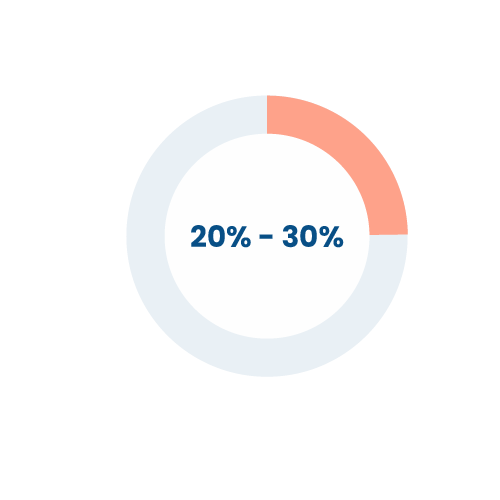
In specific studies with dogs diagnosed to suffer from adverse food reactions, 44% to 59% of them had concurrent atopy.

From a group of atopic dogs which were tested for adverse food reactions, 47% of the atopic dogs had concurrent food allergy.
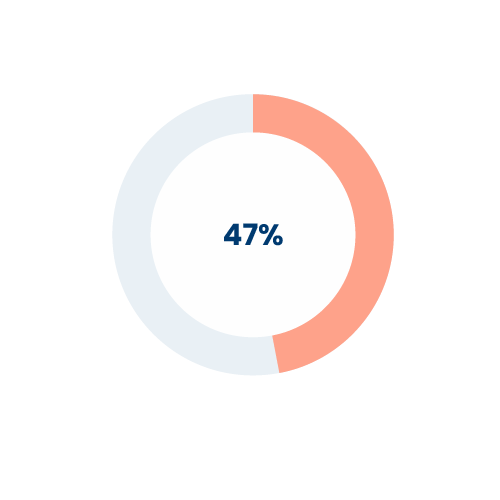
The basis of prevention of clinical signs of allergies is avoidance of the allergens, and in case this is not (totally) possible to dampen the severity of clinical signs by supportive measures. Symptoms of food allergy can be prevented by avoidance of the offending allergen in the diet. Hypoallergenic diets for the management of food allergy are composed of a limited number of ingredients with a low allergenicity like novel protein sources or hydrolysed proteins. For allergies where exposure to the allergen cannot be avoided completely (such as atopy, flea allergy or contact allergy), the aim of dietary management is to support the skin barrier and to dampen cutaneous inflammatory reactions by means of high levels of the fatty acids EPA from marine sources and GLA from borage oil. For treatment of a combination of food allergy and other types of allergies, both principles should be applied: a hypoallergenic diet with high levels of EPA and GLA.
SPECIFIC Derma and Allergy Diets - FAQ's
Is it necessary to perform an elimination trial? add
Food allergy can only be diagnosed by means of elimination trial, there are no other reliable tests. Thus, order to set the right diagnosis, the execution of an elimination trial is essential. However, sometimes owners are not willing or capable to perform an elimination trial. In these cases, it is recommend to Food Allergy Management and to evaluate the pet’s response to the diet.
Is it possible to be allergic to sources of omega-3 and omega-6 fatty acids? add
Yes, it is possible to show an adverse reaction towards sources of omega-3 and omega-6 fatty acids (such as fats and oils). Allergenicity of edible oils and fats is related to the presence of residual protein. It is suggested that in crude edible oils the protein content is in the order of 0.1-0.3 mg/ml; in refined oils this level is reduced about 100-fold. Studies have shown that crude oil can provoke allergic reactions in sensitive allergic individuals; it is assumed that refined oils do not represent a risk of provoking allergic reactions in the majority of allergic individuals.
The types of fat used in hypoallergenic diets should be considered as types of fats and refined oil might contain traces of potential protein allergens.
The pork fat which is coated on the dry SPECIFIC hypoallergenic diets has been shown by means of PCR analysis to be free of pork protein and therefore will not induce an adverse reaction in pets allergic to pork.
The fish oil which is used in hypoallergenic SPECIFIC diets is also tested by PCR-analysis and it free of fish protein, and will therefore not induce an adverse reaction in pets with an allergy towards fish.
How long before you can see if a pet with food allergy tolerates or improves on the diet? add
Pets with food allergy, which are without clinical symptoms on a certain hypoallergenic diet and are switched to another hypoallergenic diet, may show a relapse of clinical symptoms within a period of 2-3 weeks.
In pets currently suffering from symptoms of food allergy, it may take up to 6-10 weeks, before a clear improvement is seen when fed a suitable hypoallergenic diet (especially in case of dermatological clinical signs; gastrointestinal signs of adverse food reactions tend to improve faster). For this reason it is recommended that and elimination trial is performed for a period of at least 8 weeks (Olivry et al 2015).
For additional information including answers to SPECIFIC questions:
Derma & Allergy Diet Resources
Support Materials add

This editable PDF allows you to collect key information from your clients regarding their pets diets and symptoms of allergy
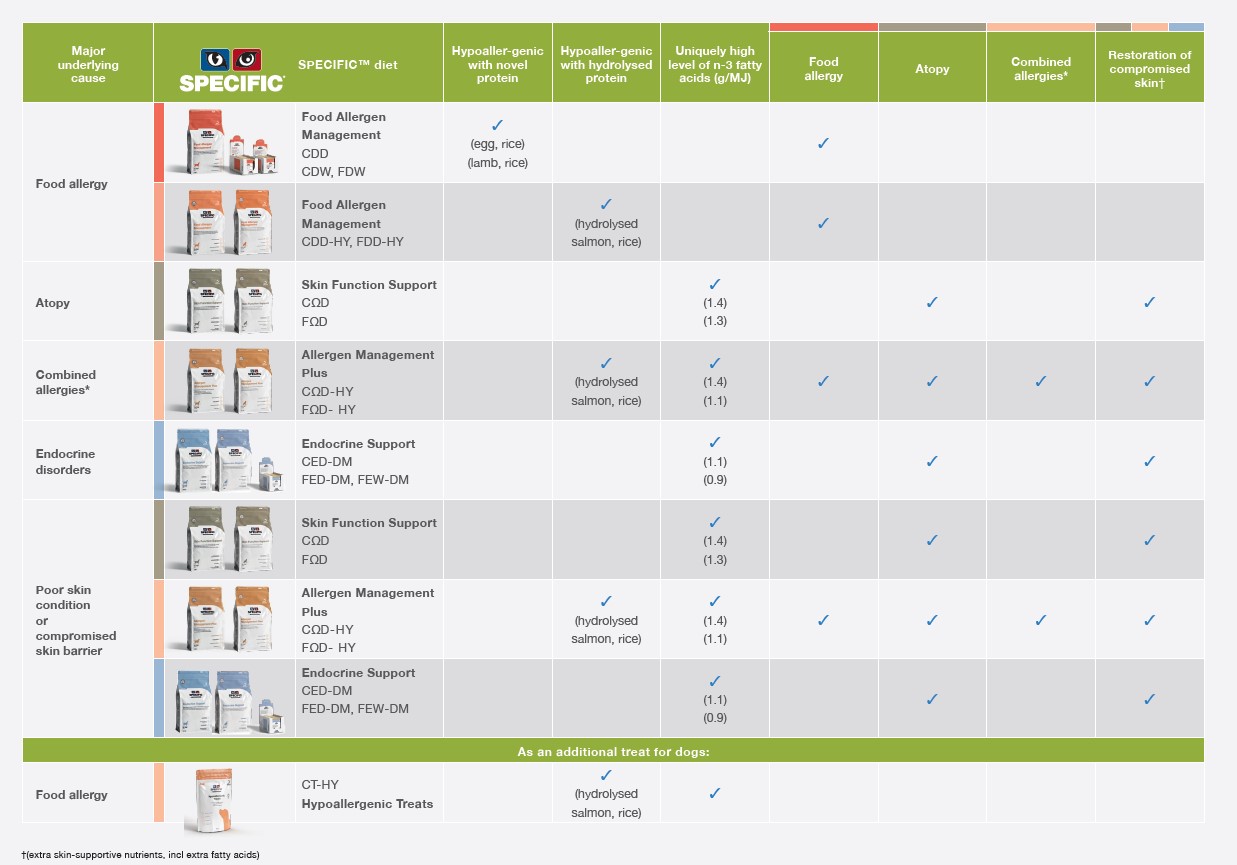
This product selector helps you find the correct diet for the different types of allergy
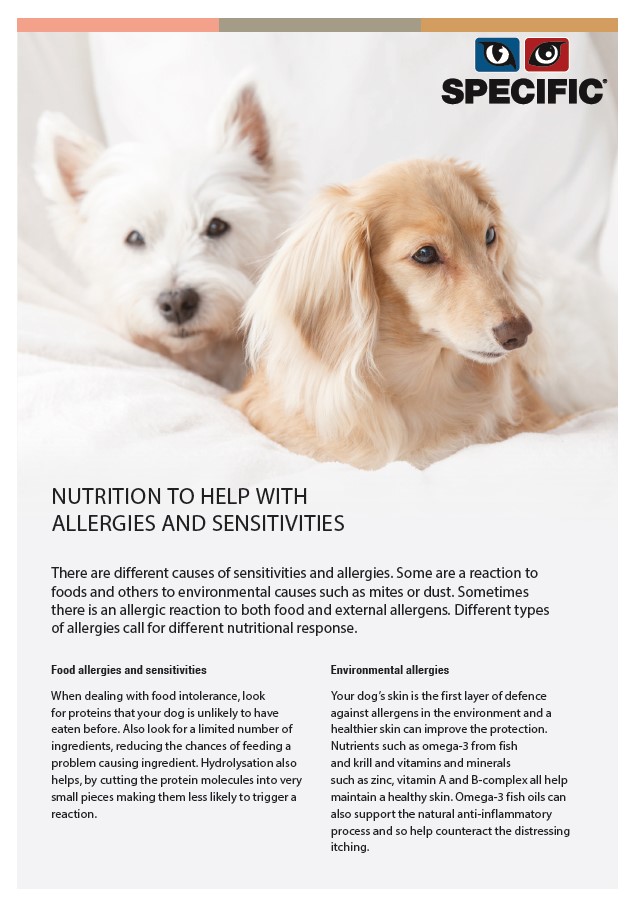
A simple leaflet explaining SPECIFIC allergy diets for dogs that you can e mail to your clients
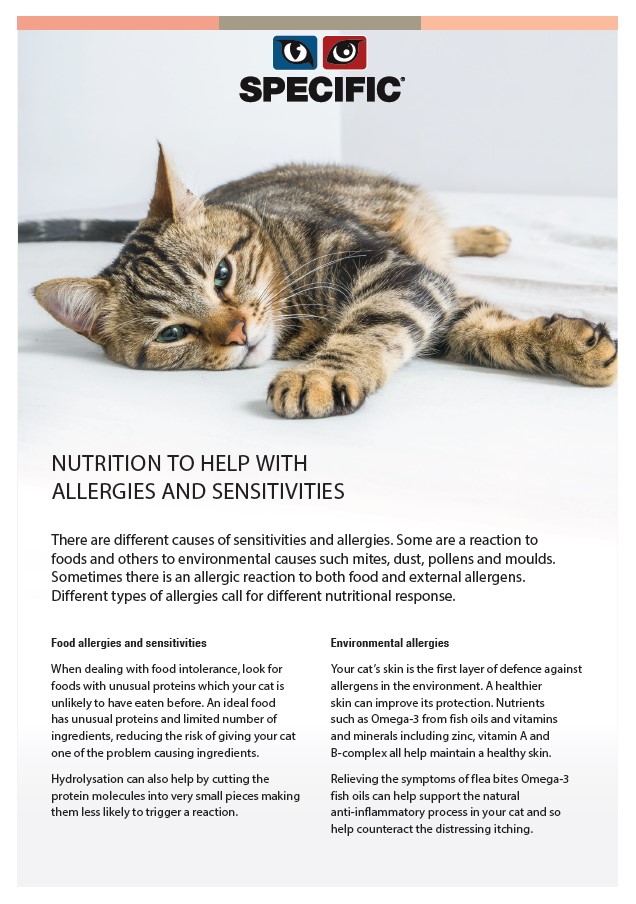
A simple leaflet explaining SPECIFIC allergy diets for dogs that you can e-mail to your clients
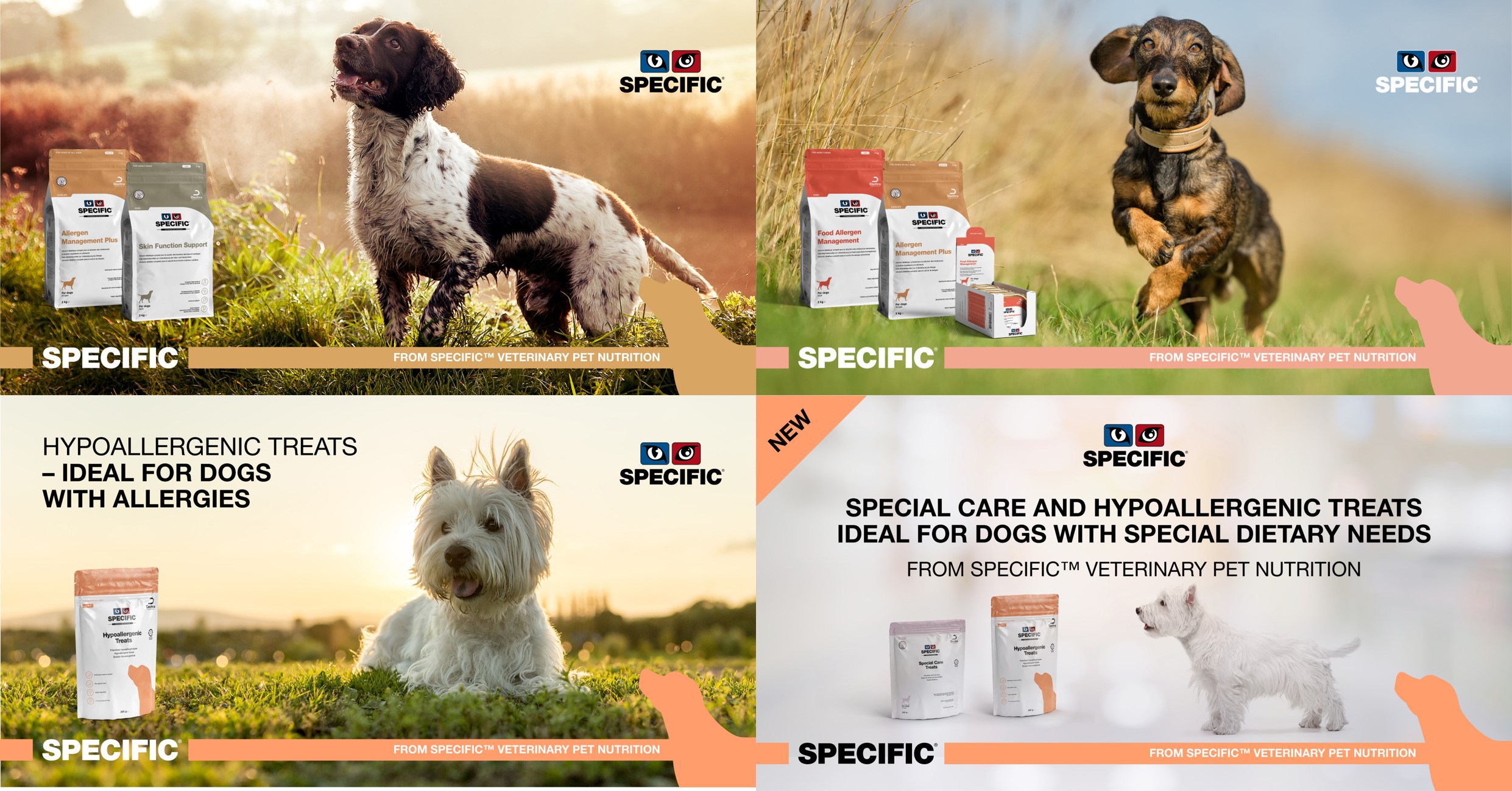
A selection of social media graphics and text that you can use on your social media discussing allergy and atopy
This owner video talks about seasonal allergies and can be used on your social media feeds with the following link https://youtu.be/ASztcHPwm1Q
Derma & Allergy Product Data Sheet add
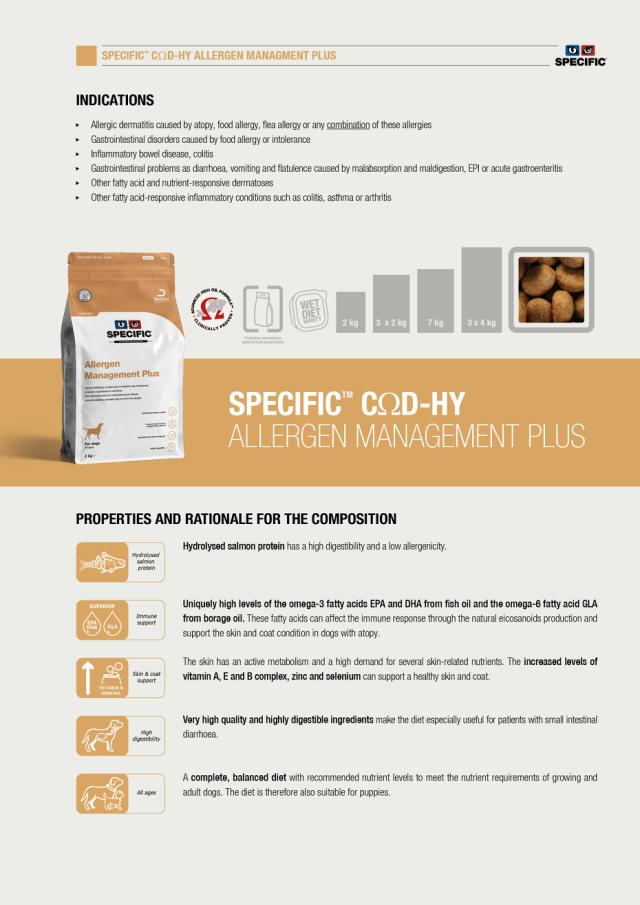
Full product data sheets are available at the SPECIFIC product information book including
- Indications for each diet
- Properties and rational for the composition
- Ingredients
- Feeding amounts
- Nutrient data
- Any contra indications
SPECIFIC owner website add

The SPECIFIC owner web sites provide a valuable tool to help explain nutrition to your clients. With pages talking about the condition and the role nutrition plays in supporting management of those conditions and details of the individual products that you may be recommending.
If you would like to link to the SPECIFIC owner web sites, the address is www.specific-diets.co.uk/

